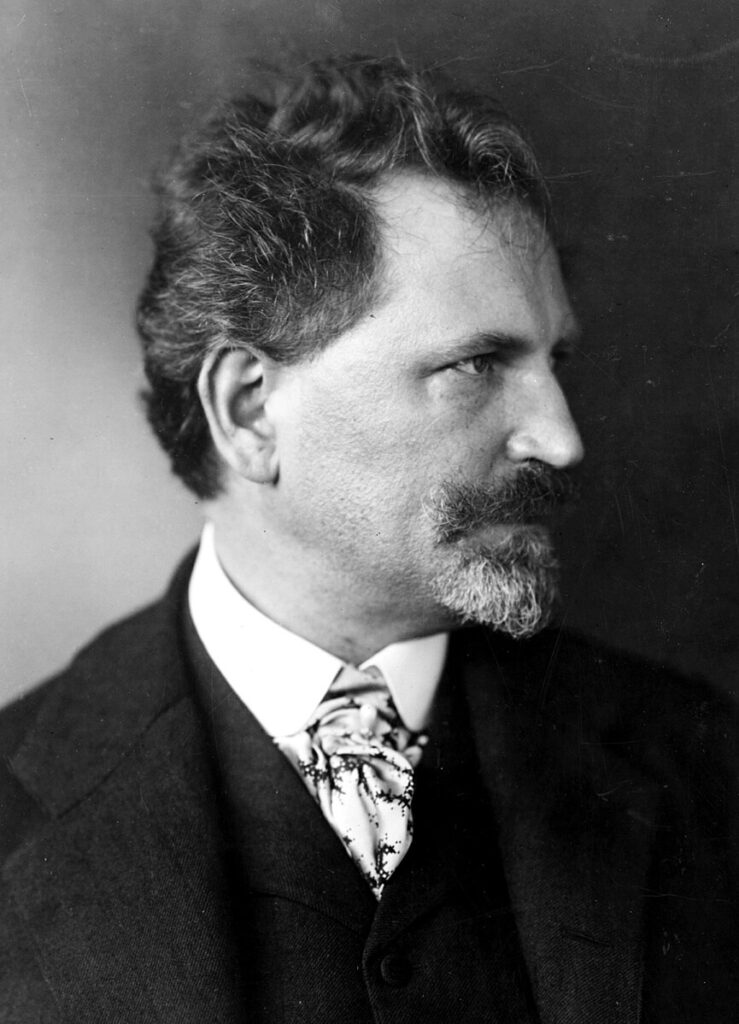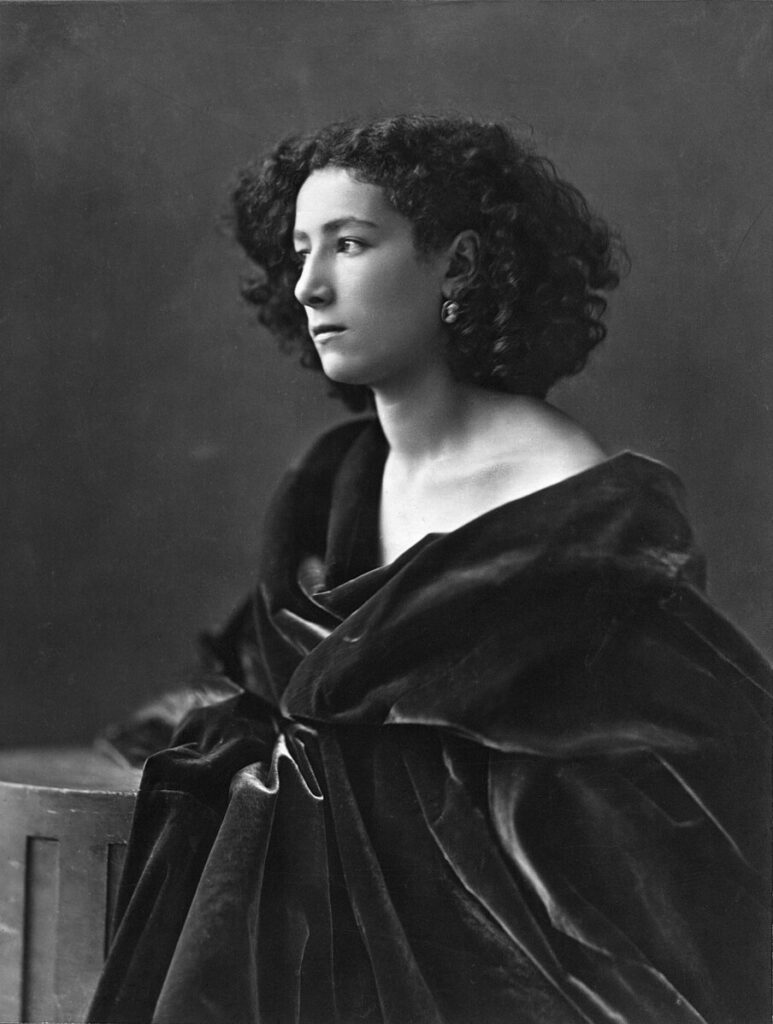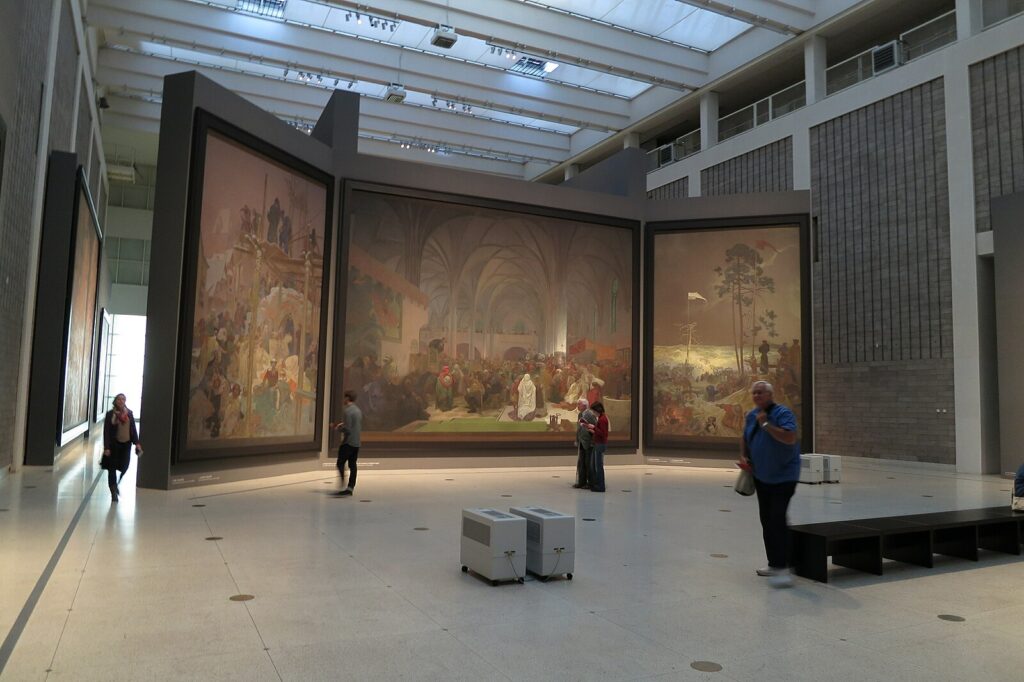Paris during the late 19th century was the epicenter of art and culture. It attracted creatives from around the globe.
The City of Light became a haven for artists, writers, and intellectuals. They converged to give birth to some of the most groundbreaking styles in history.
The cafés, salons, and galleries of Paris were incubators of creativity. Luminaries such as Pablo Picasso and Henri Matisse mingled and exchanged ideas.
It was during this time, the Art Nouveau movement was taking off, and many artists were making their mark on the artistic landscape. One of the pioneers of the movement was Alphonse Mucha.
He gained widespread acclaim for his distinctive style, which often featured elegant female figures. But he became particularly renowned for his posters, advertisements, and decorative panels.

Early Life and Education
Alphonse Mucha was born on July 24, 1860, in Ivancice, Moravia (now in the Czech Republic). He was a talented singer at an early age but his real passion was art. After he finished primary school he wanted to continue his education but his parents couldn’t afford it.
Knowing how talented Mucha was, his music teacher sent him to a choirmaster at the Cathedral of St. Peter and Paul. He was accepted and his tuition was paid for by the monastery.
However, Mucha’s destiny was not to be a singer. As fate would have it, he lost his voice and was forced to give up singing.
He found some employment designing theatrical scenery and other decorations which allowed him to express himself and gave him a sense of freedom he never felt before. In 1878 Mucha applied to the Academy of Fine Arts in Prague, but was rejected and advised to “find a different career”
When he turned 19, he moved to Vienna where he got a job working for one of the top theater companies in the city. Unfortunately, a fire destroyed the theater in 1881. Mucha moved back to Moravia where he picked up side gigs painting portraits.
His work was noticed by a nobleman named Count Eduard Khuen Belasi. He commissioned him to paint a series of murals for his home at Emmahof Castle.
Belasi was impressed with Mucha’s style and creativity. Therefore, he decided to pay for his tuition at the Munich Academy of Fine Arts so he could receive formal training.
Sarah Bernhardt and Rise to Prominence
In the 1890s, there was no stage actress more famous than Sarah Bernhardt. In 1894, Bernhardt was searching for an artist to design a promotional poster for her production of “Gismonda” at the Théâtre de la Renaissance in Paris.
Mucha, who had recently arrived in the city, happened to be in the right place at the right time.

Bernhardt’s play was a huge success and she planned on extending the run into the following year. She wanted a poster made to advertise the continuation of the play after the new year.
She called Maurice de Brunhoff, the manager of the printing firm that made her posters and ordered the prints. But because of the holiday season, there were no artists available to paint it.
It just so happened that Mucha was working at the printing firm correcting proofs when Bernhardt called. With no other artist available on such short notice Brunhoff asked Mucha if he could create the poster.
Mucha leapt at the opportunity and went straight to work. He created a poster that was 2 meters high (6.5 feet) and depicted Bernhardt in her Byzantine costume that she wears in the play.
The posters were posted around Paris on January 1, 1895, and were a huge hit. Bernhardt ordered 4,000 copies and signed Mucha to a 6-year contract. Mucha found himself a celebrity almost overnight.

Mucha’s Style
At the heart of Mucha’s contribution to Art Nouveau was his distinctive style. It was characterized by flowing lines, botanical motifs, and a graceful portrayal of the human form.
He rejected the ornate excesses of the Victorian era. Mucha’s work embodied a new form of artistic expression that emphasized elegance and harmony.
Nature became a recurring theme in Mucha’s work. His works usually depicted women adorned with ornate headdresses and draped in flowing robes. Mucha used soft pastels and muted tones to further accentuate the delicate intricacies of his subjects.
Central to Mucha’s Art Nouveau style was the integration of art into various facets of daily life. Beyond posters and advertisements, he also designed jewelry and interior spaces.
Mucha’s impact on the Art Nouveau movement reached beyond the confines of Paris, influencing a generation of artists and designers. His style captured the spirit of an era seeking a departure from the past and laid the groundwork for the modernist movements that would follow.
The Slav Epic: Mucha’s Magnum Opus
Alphonse Mucha’s artistic journey reached its zenith in 1926 with the creation of his magnum opus, the monumental series known as the “Slav Epic”. The work was conceived as a celebration of Mucha’s deep connection to Slavic history and culture.
Starting in 1910, The Slav Epic comprises twenty large-scale canvases. Each was meticulously painted with vibrant colors, and symbolic imagery.
The epic took over two decades to complete, concluding in 1926. The individual canvases within the Epic explore pivotal moments in Slavic history, from mythological origins to historical milestones.
After finishing the epic, Mucha donated it to Prague in 1928 to be put on display. Not long after it was completed, the Slav Epic was put into storage with the plans to build a suitable space to display the enormous canvases.
However, due to various challenges, including political and financial constraints, a permanent exhibition space was never built. The canvases were stored in the attic of Prague’s Veletržní Palace.

Mucha’s Death and Legacy
In the 1930s, Mucha started his newest masterpiece which was supposed to depict the Age of Reason, the Age of Wisdom, and the Age of Love. But his work was never completed due to the Nazi invasion in March 1939.
The Nazis saw Mucha as a threat to their effort to annex Czechoslovakia and arrested him. He underwent harsh interrogation for several days but was released because of failing health. On July 14, 1939, Mucha Alphonse died of pneumonia.
Mucha’s “Slav Epic” remained in storage until 1963 when the series was put on display in the South Moravian Region in the Czech Republic. In 2012 it was sent to the National Gallery’s Veletržní Palace in Prague to be put on display.
Although Mucha’s canvases still haven’t found a permanent home, it has been announced that a new complex to house the paintings will be completed in 2026. There, new and future generations can view and appreciate his art.
References
ALPHONSE MARIA MUCHA BIOGRAPHY IN DETAILS
https://www.alfonsmucha.org/biography.html
Alphonse Mucha
https://en.wikipedia.org/wiki/Alphonse_Mucha#
Alphonse Mucha